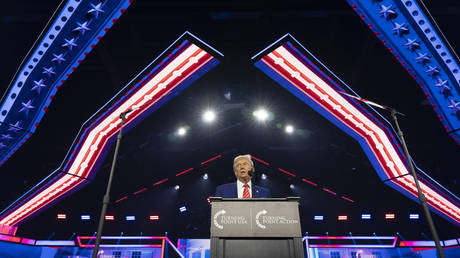Zara’s website has been hated for years, but it’s bolstering the chain’s luxury-adjacent image.
Zara.com; Rebecca Zisser/BI
Zara’s website is often ridiculed for being confusing.But experts say it contributes to its luxury-adjacent image.This helps Zara target aspirational shoppers who can’t afford to splurge on high fashion.
Zara’s website has been the subject of routine lambasting in recent years.
A quick Google search will yield blogs complaining that the website is “virtually unusable” despite being “visually appealing.” Reddit threads calling it “impossible” to navigate, and links to YouTube videos about how “annoying” it is.
Products are laid out in pictures of various sizes with models in quirky poses. It often feels more like a glossy fashion magazine than an online retailer, making finding and selecting products a bewildering maze.
These images have been the subject of countless memes. Over on Instagram, there’s even a parody account called “Awkward Zara” that mocks the model’s poses.
Experts say the layout is part of a master plan to project a more upscale image and distance Zara from other fast-fashion rivals such as H&M or Shein. Through its pricing and imagery, it can appeal to both cost-conscious and aspirational consumers at the same time.
And this strategy is paying off right now as middle-income shoppers, who increasingly find themselves priced out of luxury, head to Zara for their fashion fix.
Luxury giants such as LVMH and Kering have seen sales slow in recent months, in part because aspirational shoppers are being squeezed. LVMH’s stock is down about 6% this year, and Kering has sunk by about 35%.
Inditex, Zara’s parent company, is thriving, however. Sales were up by 10% in 2023 and have continued to grow in 2024, with its stock up 35% this year.
Secret weapon
Zara is one of the few retailers that doesn’t run conventional advertising. This means that its stores and website serve as the face of the company.
The aesthetic online is an extension of its stores, where it’s opted for a minimalist, black-and-white interior with a carefully curated layout that isn’t overstuffed with inventory.
Zara stores have a minimalist look.
Rober Solsona/Europa Press via Getty Images
The disorienting design of the website is also intentional, cultural strategist Tariro Makoni told Business Insider.
It’s reminiscent of the experience of browsing luxury brands online, she says, where customers looking to add a ready-to-wear item to their basket often have to find a boutique where the product is available first.
“You have to go through that same kind of hunt,” Makoni says, referring to Zara’s site.
This makes it feel like Zara has “invested a lot in the editorial,” which in turn makes it seem as if the “clothes must be better than they actually are,” she adds.
Cornering the luxury market
After experiencing boom times in the post-pandemic years, luxury brands with greater exposure to middle-income shoppers — Burberry and Gucci, for example — have started to struggle. At the same time, ultra-luxury players such as Hermès are still thriving.
Federica Carlotto, director of the luxury business masters program at Sotheby’s Institute of Art, tells BI: “Consumers will tend to go either super high-end and then buy way less, or relate to brands that offer them decent quality, but the possibility to play around and consume because it’s not that expensive.”
Younger shoppers are comfortable mixing and matching Zara products with high-end luxury items.
Omer Messinger/Getty Images
This puts Zara in the sweet spot. Its prices are lower than luxury brands but higher than fast-fashion rivals to maintain the premium appearance that makes the chain attractive to the aspirational shopper.
And it’s clear that Zara wants to capture that consumer with its nods to high fashion.
This month, the site’s landing page touts an announcement of its new collection with Yves Saint Laurent’s former creative director Stefano Pilati and a short film starring supermodel mom-and-daughter duo Cindy Crawford and Kaia Gerber advertising another collection, for example.
Kaia Gerber (L) and Cindy Crawford (R) at an Omega event in Paris.
Mike Marsland/Getty Images
But Zara has also benefited from shoppers becoming increasingly comfortable mixing high-luxury items with more mass-market brands.
Sokolova said that over the past decade or so, it’s become increasingly acceptable to pair luxury leather handbags with outfits from Zara.
Still, Zara’s rise might not be all bad news for the luxury sector.
Makoni says its luxury-adjacent image — bolstered by its confounding website and campaigns with purveyors of luxury like Crawford and Kaia — serves as an opening for younger generations to start exploring luxury retail: “The Zara customer when she’s 22 could very well be the Saint Laurent customer at 35.”





+ There are no comments
Add yours